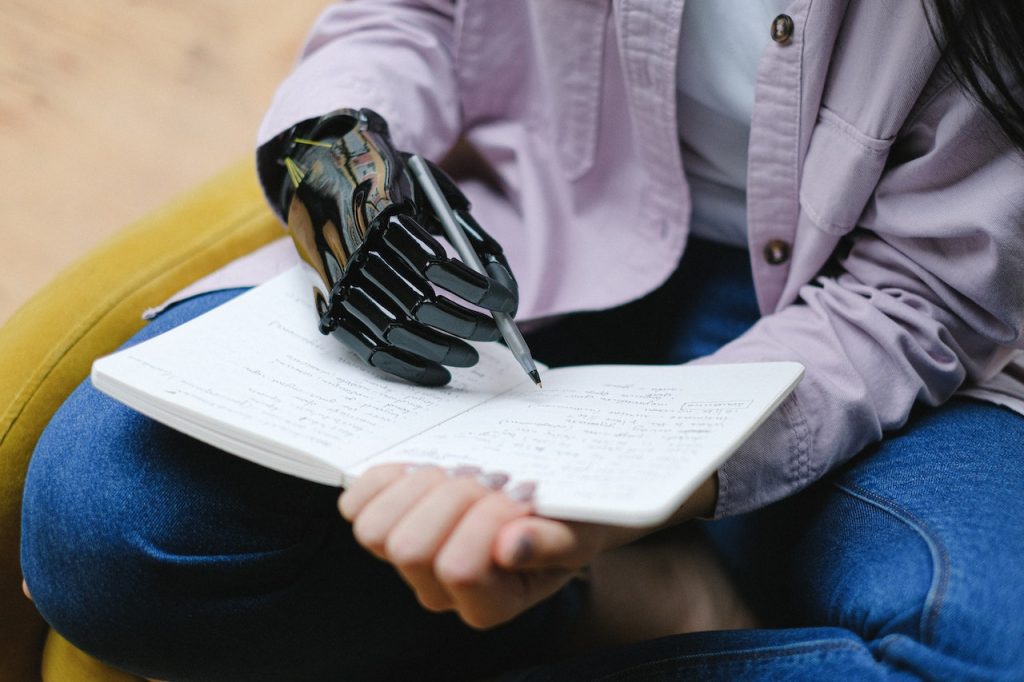Artificial intelligence (AI) and technology have the potential to revolutionize the way we learn and teach, particularly at the middle and high school levels.
From personalized learning to virtual reality simulations, the integration of these tools in the classroom has the potential to enhance the learning experience for students and make education more accessible.
In this blog post, we will explore several facets of AI and technology in middle/high school education and how it will play a role in the future.

Contents
Benefits of AI and Technology in the Classroom
One of the major benefits of AI and technology in the classroom is the ability to personalize learning.
With AI-powered tools, teachers can create customized lesson plans and assessments that cater to the individual needs and learning styles of each student.
This can help students stay engaged and motivated, as they are able to learn at their own pace and in a way that is most effective for them.
In addition, technology can also make education more accessible for students with disabilities.
For example, text-to-speech software and screen readers can make it easier for students with visual impairments to access course materials, while virtual reality simulations can provide hands-on learning experiences for students who may not be able to physically participate in certain activities.
AI and technology can also enhance the overall learning experience for students by providing them with engaging and interactive resources.
For example, virtual reality simulations and online games can make learning more fun, while online resources such as videos and podcasts can make it easier for students to review and reinforce concepts.
Challenges and Considerations
There are several challenges and considerations to keep in mind when implementing AI and technology in education.
One major challenge is the potential for AI tools to perpetuate biases that already exist in the education system.
AI algorithms and systems can sometimes reflect the biases of their creators or the data they are trained on, leading to unfair or discriminatory outcomes.
It is crucial to ensure that AI tools are designed and implemented in a way that is fair and unbiased and to regularly monitor and address any potential biases that may arise.
Another consideration is the potential costs and infrastructure requirements associated with implementing AI and technology in the classroom.
While the initial investment in hardware, software, and training may be substantial, the long-term benefits of using AI and technology to improve student learning and outcomes could outweigh the costs.
This may also prevent learners from low-income backgrounds from enjoying the benefits of this advancement.
In summary, while AI and technology have the potential to enhance the learning experience for students, it is important to carefully consider the challenges and limitations and to ensure that they are implemented in a fair and unbiased manner, with due consideration given to the costs and infrastructure requirements.
Impact on Home Schooling
AI and technology can also have a significant impact on homeschooling, which has become increasingly popular in recent years.
One major benefit of using AI and technology in homeschooling is the ability to customize the learning experience for individual students.
With personalized learning tools, parents can create a customized curriculum that caters to the unique needs and learning styles of each child.
In addition, technology can make homeschooling more convenient and efficient. For example, online resources such as videos, podcasts, and interactive games can make it easier for parents to provide engaging and interactive learning experiences for their children.
Online tutoring and virtual classrooms can also provide students with access to experienced teachers and a sense of community, which may be lacking in traditional homeschooling setups.
However, it is important to consider the potential challenges and limitations of using AI and technology in homeschooling as well.
One major challenge is the potential for students to become too reliant on technology and lose the benefits of hands-on, experiential learning.
It is important to strike a balance and ensure that students have opportunities to engage with the material in a variety of ways.
VR facilitates collaboration and communication among students and educators, even if they are physically distant.
Why have VR training? They can meet in virtual classrooms, work together on projects, and engage in virtual discussions, fostering a sense of community and peer learning.
While there is justified cause for concern, parents who opt for the best homeschooling programs with modern homeschooling curricula shouldn’t be worried.
Overall, the integration of AI and technology in homeschooling has the potential to provide students with a personalized and convenient learning experience, but it is important to consider the potential challenges and limitations and ensure that a balance is maintained.
AI and technology have the potential to revolutionize the way we learn and teach. From personalized learning to virtual reality simulations, these tools have the potential to enhance the learning experience for students and make education more accessible.
However, it is important to consider the potential challenges and limitations, and ensure that AI tools are designed and implemented in a way that is fair and unbiased.
Overall, the integration of AI and technology in the classroom has the potential to be a major driving force in shaping the future of education.
The Daily Buzz combines the pursuit of interesting and intriguing facts with the innate human desire to rank and list things. From stereotypical cat pictures to crazy facts about the universe, every thing is designed to help you kill time in the most efficient manner, all while giving you something to either laugh at or think about!
